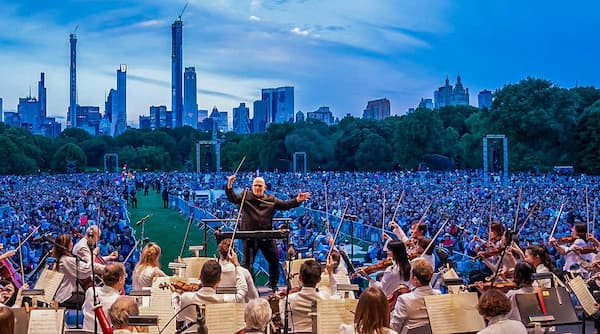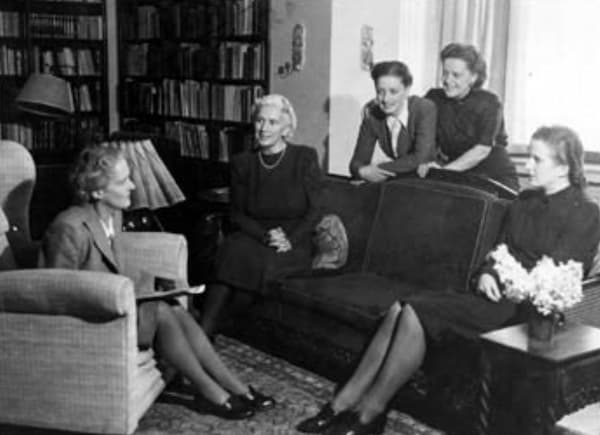The early to mid-19th century was more than just a time of waltzes, it was also the polka and the galop that held the floor. The most important dancemen came from Vienna: Johann Strauss I and Joseph Lanner. A group from the Steiermark region of Austria came to Copenhagen in June 1839 with the new music and impressed a local trumpeter immediately. The group stayed in Copenhagen for a month, and when they left, Hans Christian Lumbye was behind the creation of a Danish orchestra that could play the music that everyone loved.
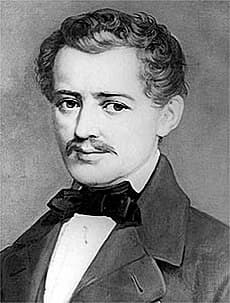
Johann Strauss I
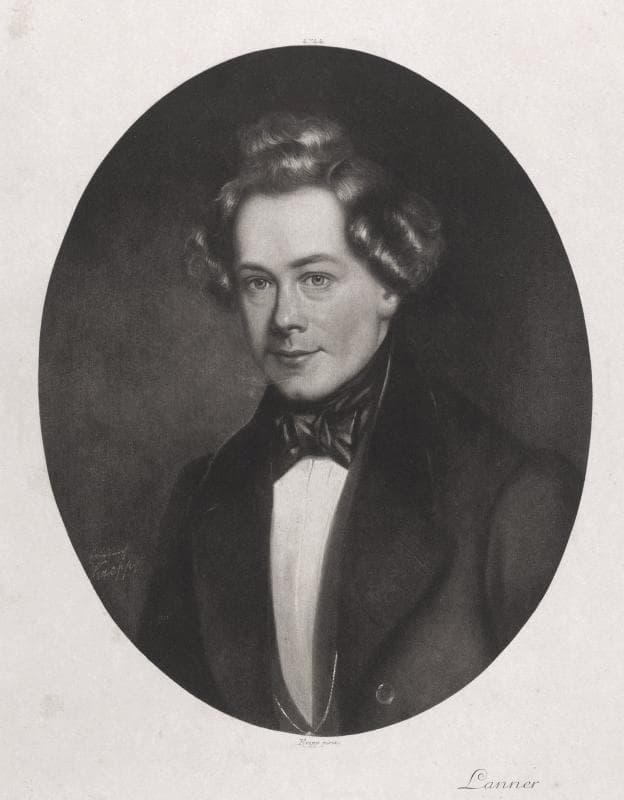
Friedrich Krepp: Joseph Lanner
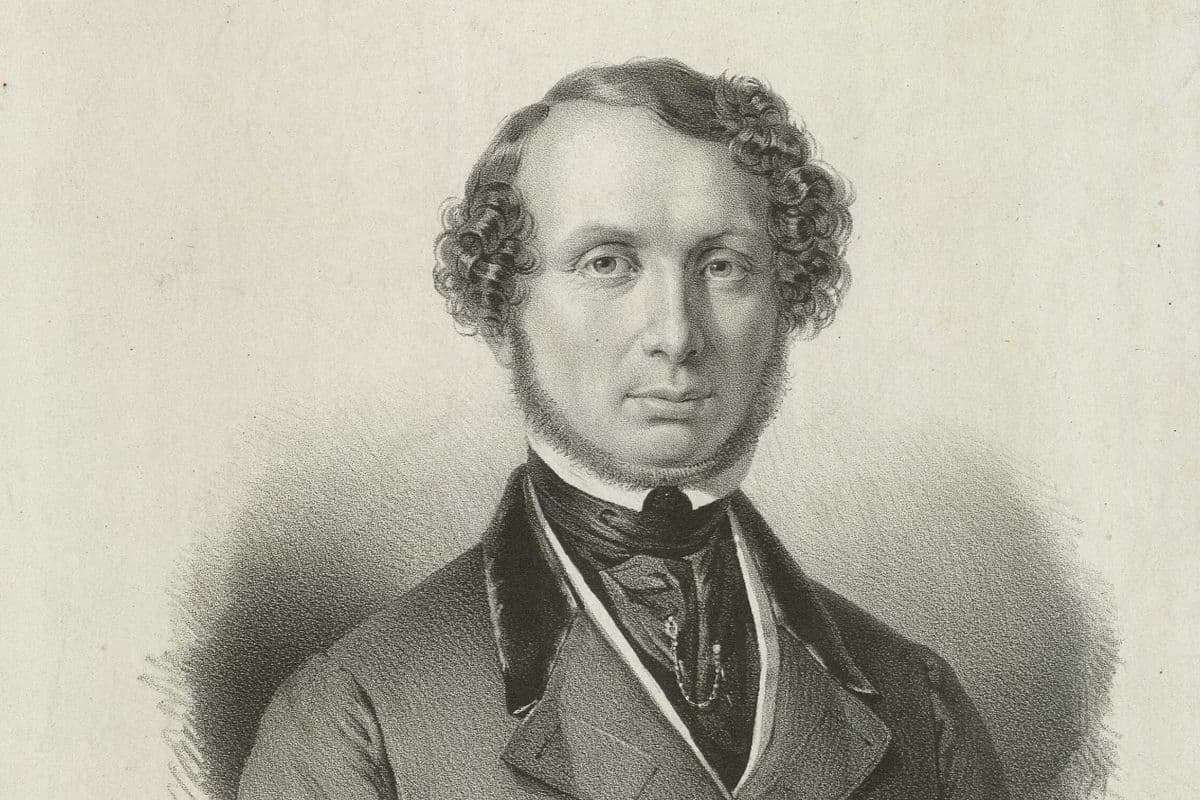
Hans Christian Lumbye
February 1840 saw the debut of Lumbye’s 20-piece orchestra at the Hotel d’Angleterre (where the ‘Steiermarkers’ had played) performing music by Strauss, Lanner, and now Lumbye. He was an immediate hit. Along with being a trumpet player, Lumbye was a master of many instruments and, like Strauss, led his orchestra from the violin.
A local entrepreneur, Georg Carstensen, saw Lumbye’s popularity and created an amusement garden to showcase the local success.
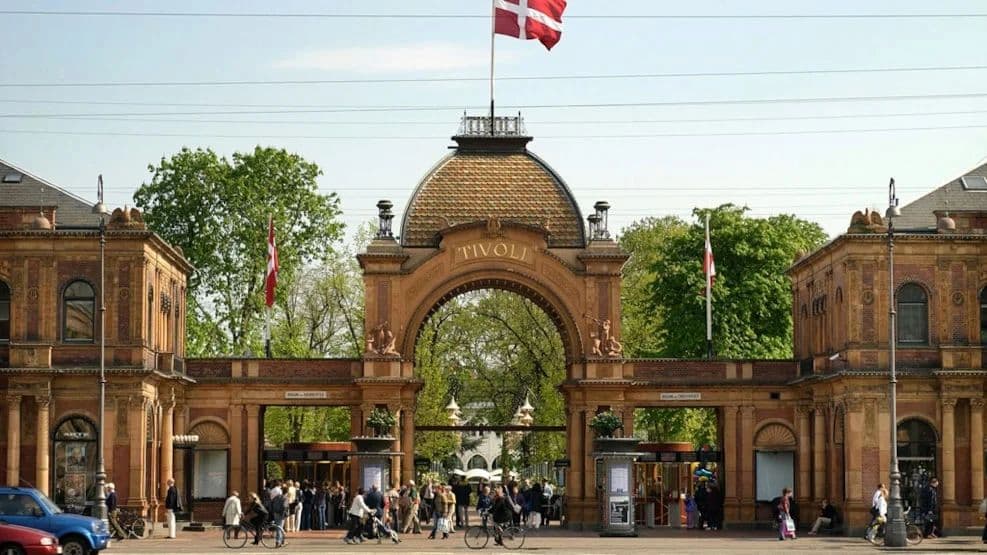
Tivoli Garden’s Entrance
On 15 August 1843, Tivoli Gardens opened under the name of Summer Tivoli and Vauxhall. The name Vauxhall came from an amusement garden in London, and the name Tivoli came from similar gardens in Paris, Berlin, and Hamburg, all named after a small town outside Rome. The two names together promised live music, dancing, dining, and evening illuminations. Opening day saw 3,000 people wandering the grounds. Music was played everywhere around the garden, even on the carousel ride, which had its own band of 6 musicians who played from the centre.
The evening concerts had H.C. Lumbye as the attraction. Actually, the main concert hall had two orchestras that played between 7 and 11 pm nightly: Lumbye and his 22-member ensemble of wind, string, and percussion players at one end, and at the other, Henrik Braunstein’s smaller 17-player ensemble of wind and percussion players. By playing alternatively, each band got a break, and there was music all night long. The front of the hall was open, so the music could be heard all over the gardens.
We usually hear Lumbye’s music played by large orchestras, so to hear how it was in the 1840s, a smaller orchestra needs to be used. In this recording, Concerto Copenhagen uses an orchestra the size of Lumbye’s and the lower tuning pitch (A=430hz) of his day.
One of the most long-lasting of his works was the Champagne Galop, with its characteristic cork-popping sound.
Hans Christian Lumbye: Champagnegalop, Op. 14 (Concerto Copenhagen; Lars Ulrik Mortensen, cond.)
One of the ways that Strauss, Lanner, and Lumbye engaged the audience was by providing music that was familiar, albeit in new clothes, such as this waltz by Lanner, Die Mozartisten (The Mozartians), that is built around themes from Don Giovanni and Die Zauberflöte. Lanner indicated on the title page that this work, although a waltz, was less intended for dancing than for ‘admirers of the immortal master’.
Joseph Lanner: Die Mozartisten, Op. 196 (Concerto Copenhagen; Lars Ulrik Mortensen, cond.)
Johann Strauss I was one of Lumbye’s heroes, and in 1845, Lumbye, conducting in Vienna, found Strauss and some of his musicians in the hall. Much to Lumbye’s honour, they applauded his compositions.
In addition to functioning as a dance band, Lumbye’s orchestra was also expected to help promote the other attractions at Tivoli. We can hear at the beginning an inviting champagne bottle pop (promoting the Tivoli restaurants), cuckoos’ calls (promoting the shooting range), and, at the core of this work, music to promote visiting the Tivoli Island where the ‘singer’s pavillion’ was located. In Lumbye’s work, the gods of song and wine, accompanied by the anvil-thumping of Vulcan, god of the blacksmiths, were the inspiration for this galop.
Hans Christian Lumbye: Echo from the Old Gods at Tivoli Island, Galop (Concerto Copenhagen; Lars Ulrik Mortensen, cond.)
In his first year at Tivoli, Lumbye wrote galops for the roller-coaster, the gondola ride, the theatre, the circus, the hall, the shooting gallery, and the carousel track, among other facilities. The Tivoli Bazaar Tsching-Tsching Polka promoted the Tivoli Bazaar, where all sorts of things could be purchased, including piano reductions of Lumbye’s orchestral hits for playing at home. In the bazaar was a Chinese boutique with all sorts of exotic goods, which Lumbye puts into music with a lot of crashing percussion.
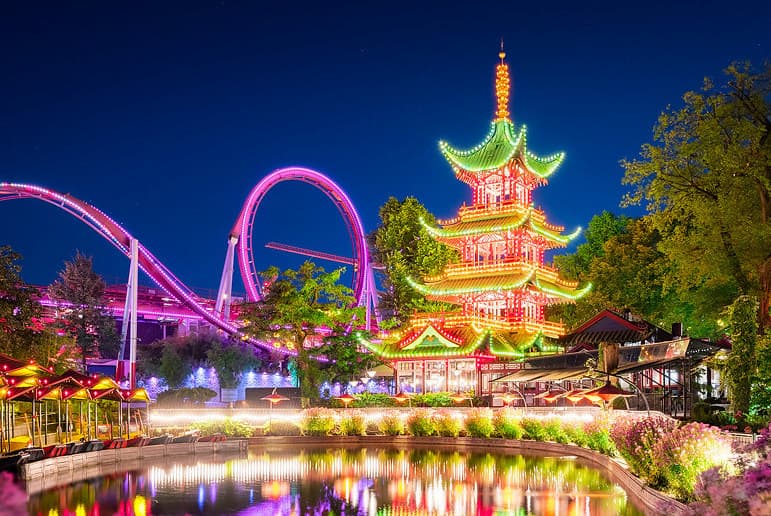
Tivoli at Night
Hans Christian Lumbye: Tivoli Bazaar Tsching-Tsching Polka (Concerto Copenhagen; Lars Ulrik Mortensen, cond.)
From its roots in Vienna to its offshoot in Denmark, the Viennese dance craze, starting with the seductive and sensuous Viennese Waltz, and its adoption of the French galop and the Bohemian polka brought all of Europe to its feet. The pleasure gardens, which had their roots in London in the 1660s, were spaces open to the public for recreation and entertainment. It was the aspect of being open to the public that was innovative in London and proved popular throughout Europe. What better place for Lumbye’s orchestra?
For more of the best in classical music, sign up for our E-Newsletter

